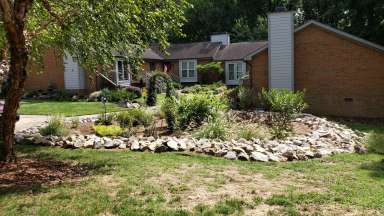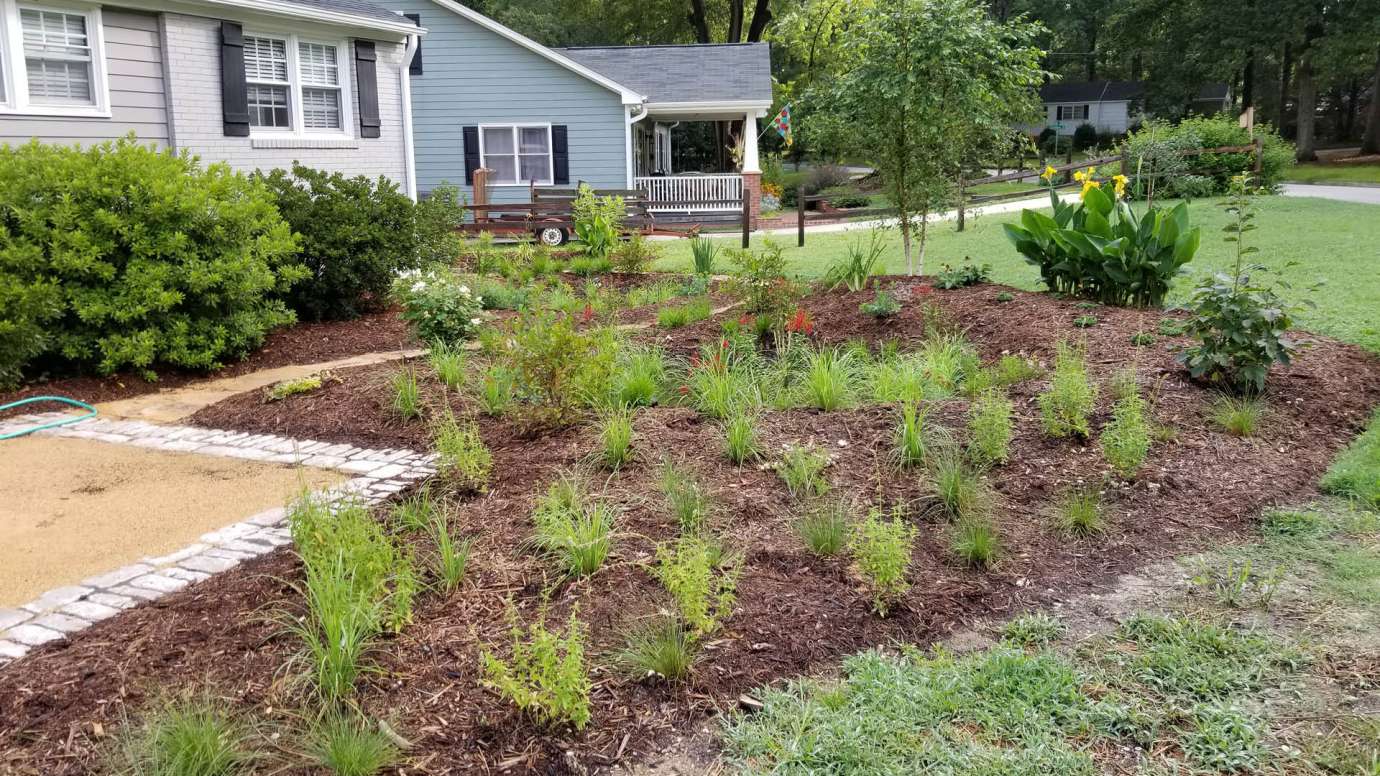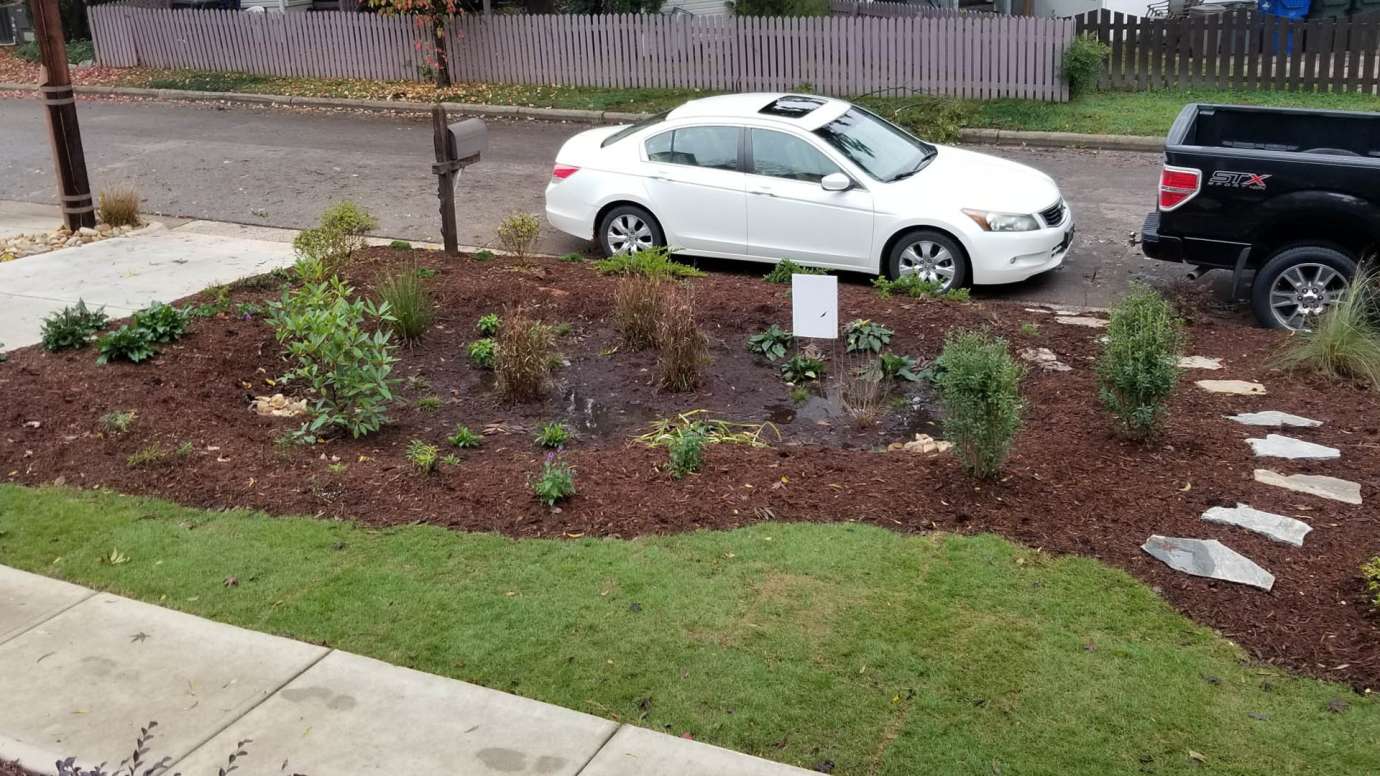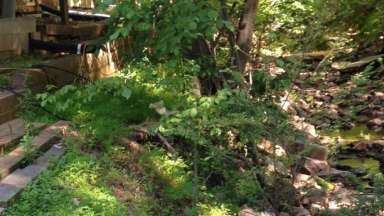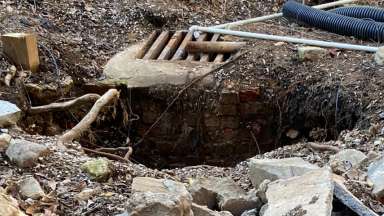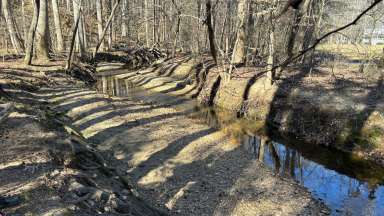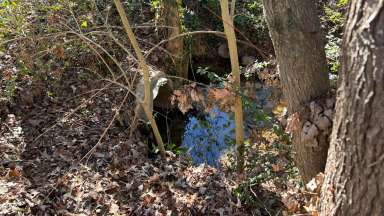Jump To:
How it Works
A rain garden, or bioretention area, is a planted area that collects and cleans rainwater coming from impervious surfaces, like roads, sidewalks, roofs, driveways and patios. The plants and soil in the garden slow down the water and filter out pollution before it reaches a storm drain or creek.
Rain gardens stay dry when it isn't raining. You'll typically see a bowl-shaped garden in someone's yard. These gardens are not used to grow produce.
Bioretention Area
A bioretention area is a more engineered feature. You will see these on road and commercial projects and can typically include risers and outlet structures.
Interested in installing a rain garden or bioretention area? Apply for Raleigh Rainwater Rewards!
Examples
This rain garden collects 1,100 gallons of stormwater runoff from the property's roof. This helps protect a stream called Pigeon House Branch from water pollution.
This is a backyard rain garden that collects stormwater runoff from the property's roof and sidewalk when it rains. The plants and soil in the garden help protect Walnut Creek from water pollution.
Benefits
- Beautiful landscaping
- Reduces time maintaining your lawn
- Protects the environment
- A good community space or outdoor amenity
Best Location
- Flat areas downhill of impervious surface that will be treated
- Where water naturally flows to a stream or the stormwater system
- In soils that quickly absorb water
- Placed at least 10 feet away from a building
What to avoid:
- Underground utilities
- Tree root zones, Easements
- Stream buffers
- Steep slopes
- Runoff from other properties
Infiltration Test
Raleigh Stormwater demonstrates how to conduct an Infiltration Test for a rain garden for Raleigh Rainwater Rewards applicants.
How to Conduct an Infiltration Test for a Rain Garden
Plants to Use
There are several North Carolina native plants that work well in rain gardens. Learn more about their characteristics and benefits.
